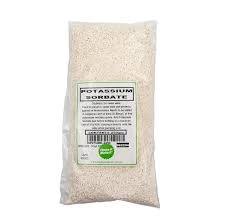
controlled release fertilizer
The Benefits and Advances of Controlled Release Fertilizers
In modern agriculture, the quest for sustainable practices that enhance productivity while minimizing environmental impacts is more critical than ever. One of the most significant innovations in this arena is the development and use of controlled release fertilizers (CRFs). Unlike traditional fertilizers that release nutrients rapidly, CRFs are designed to deliver nutrients gradually over an extended period. This gradual release mechanism not only optimizes nutrient availability for crops but also reduces the risks of leaching and runoff, thereby protecting water quality.
Understanding Controlled Release Fertilizers
Controlled release fertilizers are engineered to provide nutrients to plants in a regulated manner. This is achieved through various methods, including coating fertilizers with polymers, using encapsulation technologies, or applying chemical modifications that slow down nutrient release. These technologies ensure that nutrients are available to plants synchronously with their growth phases, leading to improved efficiency in nutrient uptake.
Nutrient Efficiency and Reduced Environmental Impact
One of the primary advantages of CRFs is their ability to enhance nutrient use efficiency. Traditional fertilizers often lead to nutrient surges, resulting in excess nutrients that can leach away into groundwater or run off into nearby water bodies. This can cause problems such as eutrophication, which depletes oxygen in water and harms aquatic life. In contrast, CRFs provide a steady nutrient supply that aligns with plant demand, reducing the amount of fertilizer needed and minimizing the environmental risks associated with nutrient loss.
Economic Benefits for Farmers
The economic implications of using controlled release fertilizers are significant. While the initial cost of CRFs may be higher than that of conventional fertilizers, their efficiency often leads to lower overall input costs. By reducing the frequency of applications and minimizing nutrient waste, farmers can achieve cost savings in both labor and materials. Furthermore, with improved crop yields and quality, the return on investment for CRFs can be quite favorable.
controlled release fertilizer

Enhancing Crop Quality and Yield
Controlled release fertilizers are particularly beneficial for high-value crops and specialty crops that require precise nutrient management. By maintaining optimal nutrient levels in the soil for longer periods, CRFs can significantly enhance the quality and yield of these crops. This is particularly important in the context of organic farming and sustainable practices where maintaining soil health and increasing productivity without relying heavily on chemical inputs is a priority.
Challenges and Future Directions
Despite their advantages, the adoption of controlled release fertilizers is not without challenges. Awareness and understanding of these products among farmers are crucial for their successful implementation. Additionally, ongoing research is necessary to optimize formulations for different soil types and cropping systems, ensuring that CRFs can be tailored to meet specific agricultural needs.
The future of controlled release fertilizers also lies in technological advancements. Developments in nanotechnology, for instance, hold the promise of enhancing the precision and efficacy of nutrient delivery systems. Integrating digital technologies into agriculture, such as precision farming, can allow for better monitoring and application of CRFs based on real-time crop needs, further improving their efficiency.
Conclusion
Controlled release fertilizers represent a significant advancement in agricultural practices, offering numerous benefits including improved efficiency, reduced environmental impact, and enhanced crop yield and quality. As the global agricultural community continues to seek sustainable solutions to meet the challenges of food production, CRFs stand out as a viable alternative to conventional fertilizers. With ongoing research and development, along with increased farmer education, their role in agriculture is likely to grow, contributing to a more sustainable and productive future in farming.
-
Aluminum Hydroxide: Quality Gels & Dried Gel AntacidNewsAug.31,2025
-
Buy High-Quality Trichloroisocyanuric Acid for Sale | TCCA 90% SupplierNewsAug.30,2025
-
Pure Sodium Dichloroisocyanurate Dihydrate | Powerful DisinfectantNewsAug.29,2025
-
Industrial Chemicals: Quality & Purity for Every IndustryNewsAug.28,2025
-
Nitrile Rubber Honoring Strict Production StandardsNewsAug.22,2025
-
Aspartame Ingredients Honoring Food Safety ValuesNewsAug.22,2025
-
Fertilizer for Balanced Plant NutritionNewsAug.22,2025
Hebei Tenger Chemical Technology Co., Ltd. focuses on the chemical industry and is committed to the export service of chemical raw materials.
-

view more DiethanolisopropanolamineIn the ever-growing field of chemical solutions, diethanolisopropanolamine (DEIPA) stands out as a versatile and important compound. Due to its unique chemical structure and properties, DEIPA is of interest to various industries including construction, personal care, and agriculture. -

view more TriisopropanolamineTriisopropanolamine (TIPA) alkanol amine substance, is a kind of alcohol amine compound with amino and alcohol hydroxyl, and because of its molecules contains both amino and hydroxyl. -

view more Tetramethyl Thiuram DisulfideTetramethyl thiuram disulfide, also known as TMTD, is a white to light-yellow powder with a distinct sulfur-like odor. It is soluble in organic solvents such as benzene, acetone, and ethyl acetate, making it highly versatile for use in different formulations. TMTD is known for its excellent vulcanization acceleration properties, which makes it a key ingredient in the production of rubber products. Additionally, it acts as an effective fungicide and bactericide, making it valuable in agricultural applications. Its high purity and stability ensure consistent performance, making it a preferred choice for manufacturers across various industries.





